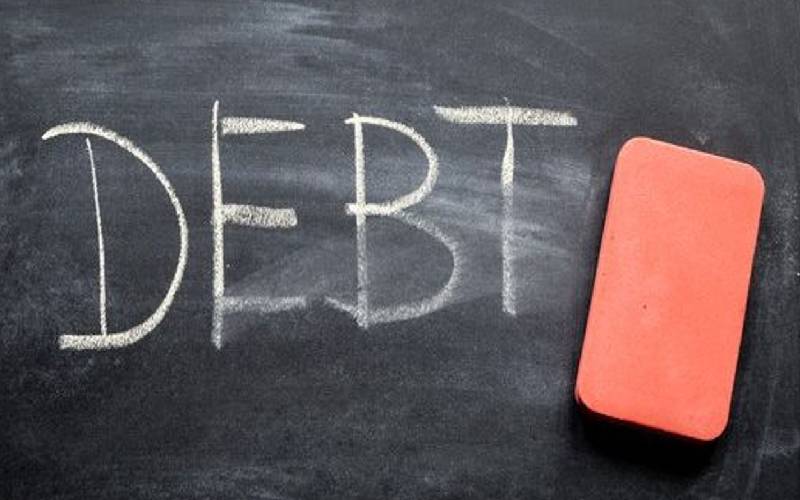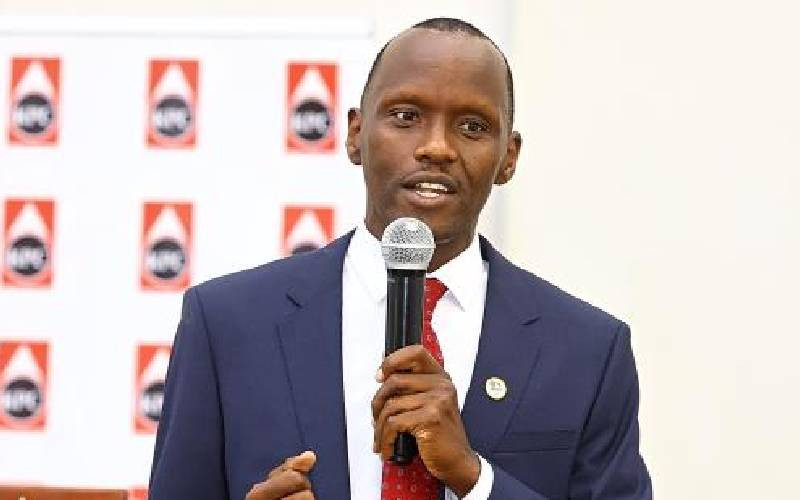
The national Treasury recently released the 2018 edition of the public debt management report. The report presents interesting reading of national debt statistics.
For instance, while the economy grew by only 4.9 per cent in the 2017/18 fiscal year, relative to 5.9 per cent in 2016/17, public debt grew by 14.5 per cent during the same period, to stand at Sh5,047 billion. In simple terms, the country’s indebtedness grew at a faster rate than its income, which is its ability to service debt.
The report reveals that debt-to-GDP ratio stood at 57.1 per cent during the 2017/18 year, a marginal reduction from the previous 57.5 per cent. Conventionally, 60 per cent debt-to-GDP ratio is the rule-of-the-thumb threshold for debt sustainability.
Medium term
Further, the public debt management report indicates that the country’s debt service-to-revenue ratio exceeds the 30 per cent threshold and is projected to remain that way in the medium term.
The data, therefore, appears to indicate the country is wobbling. Economists define public debt overhang as the deterioration of the economy due to excessive public debt.
Two reasons partly explain the asymmetry between interest payment and principal retirement. First is the country’s growing use of the more expensive external commercial debt. Since June 2013, the proportion of external commercial debt to total external debt has risen from under two to more than 34 per cent.
In contrast, bilateral debt, commonly associated with relatively lower servicing cost, has declined during the same period from 63.5 per cent to 31 per cent.
Second is the greater reliance on the more expensive short-term debt. For instance, the total outstanding Treasury bills grew by 275 per cent between June 2015 and June last year.
Threshold limits
A key issue emerging is whether Kenya’s public debt is sustainable.
According to the Treasury’s public debt report, the analysis of present value of debt relative to both the GDP and revenue shows that most threshold limits have not been breached, indicating sustainable debt utilisation.
However, the Treasury’s analysis leaves out several interesting fiscal policy parameters.
Although Treasury forecasts a decline in this metric going forward, this will only be possible with sustainable growth in revenues. However, revenues have been falling alarmingly in recent years: In 2013/14, the revenue to GDP ratio stood at a modest 18.2 per cent but has since dropped to a 16.5 per cent (forecast for 2018/19).
Stay informed. Subscribe to our newsletter
There is no convincing reason to believe that these downward trends are going to be reversed sustainably in the medium term. Real GDP is forecast to improve only marginally from about 5.9 in 2018 to about 6.1 per cent by 2020.
Further, data from the Central Bank of Kenya shows that the country is struggling to finance its recurrent expenditure. For the first 11 months of last year, total (tax and non-tax) revenue stood at Sh8.604 trillion against recurrent expenditure of Sh9.116 trillion.
This implies that the country borrowed partly to pay interest on debt, which constituted 20.4 per cent of recurrent spending for the period. When an economic agent borrows to service its debt obligations, debt utilisation is unsustainable.
Economic growth
In an effort to reduce the crowding-out effect of heavy public sector borrowing, the national Government enacted, and implemented in September 2016, a law capping interest rates.
However, this law has reduced banks’ ability to appropriately price credit, and has consequently, according to African Development Bank, reduced credit access to the private sector. Reduced private sector access to credit inhibits economic growth and revenue collection, and jeopardises ability to service debt.
These grim statistics must be juxtaposed with the country’s persistent revenue collection under performance
Despite this evidence of diminishing economic prospects, however, the Treasury, in the BPS projects economic growth at 6.2 per cent in 2019 “supported by a strong rebound in agricultural output, steadily recovering industrial activity and robust performance in the services sector.”
Nil change
The optimistic language describing the performance of economic sectors masks the almost nil change in forecast real economic expansion between 2018 and 2019.
Clearly, the national government is going to continue borrowing heavily to fund an ambitious infrastructure drive and to refinance existing debt, driving the public debt level even higher.
Soon, lenders, such as China, whose debt are partly guaranteed by strategic public assets, may exercise their right of lien on those assets.
Mr Kodongo is a Associate Professor in Finance at Wits Business School.
 The Standard Group Plc is a
multi-media organization with investments in media platforms spanning newspaper
print operations, television, radio broadcasting, digital and online services. The
Standard Group is recognized as a leading multi-media house in Kenya with a key
influence in matters of national and international interest.
The Standard Group Plc is a
multi-media organization with investments in media platforms spanning newspaper
print operations, television, radio broadcasting, digital and online services. The
Standard Group is recognized as a leading multi-media house in Kenya with a key
influence in matters of national and international interest.
 The Standard Group Plc is a
multi-media organization with investments in media platforms spanning newspaper
print operations, television, radio broadcasting, digital and online services. The
Standard Group is recognized as a leading multi-media house in Kenya with a key
influence in matters of national and international interest.
The Standard Group Plc is a
multi-media organization with investments in media platforms spanning newspaper
print operations, television, radio broadcasting, digital and online services. The
Standard Group is recognized as a leading multi-media house in Kenya with a key
influence in matters of national and international interest.









